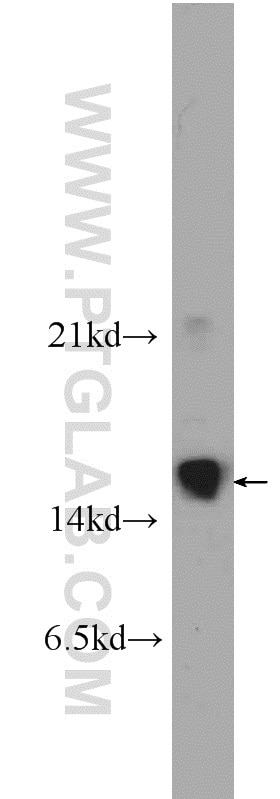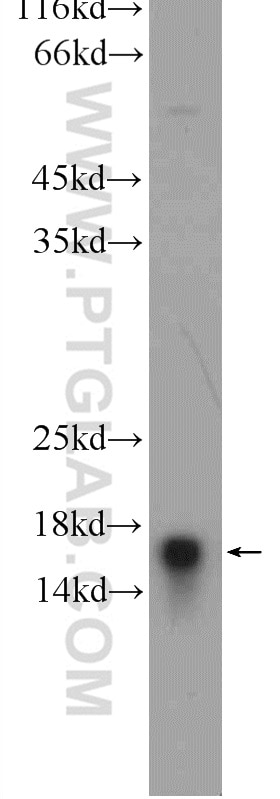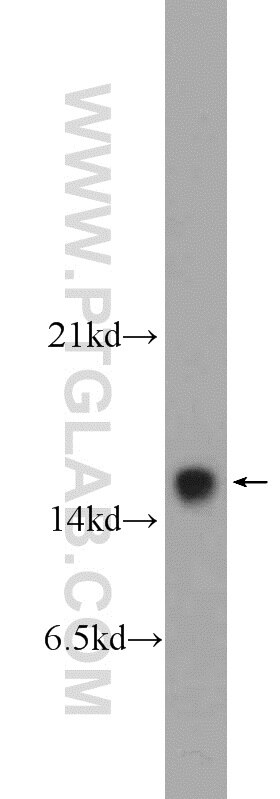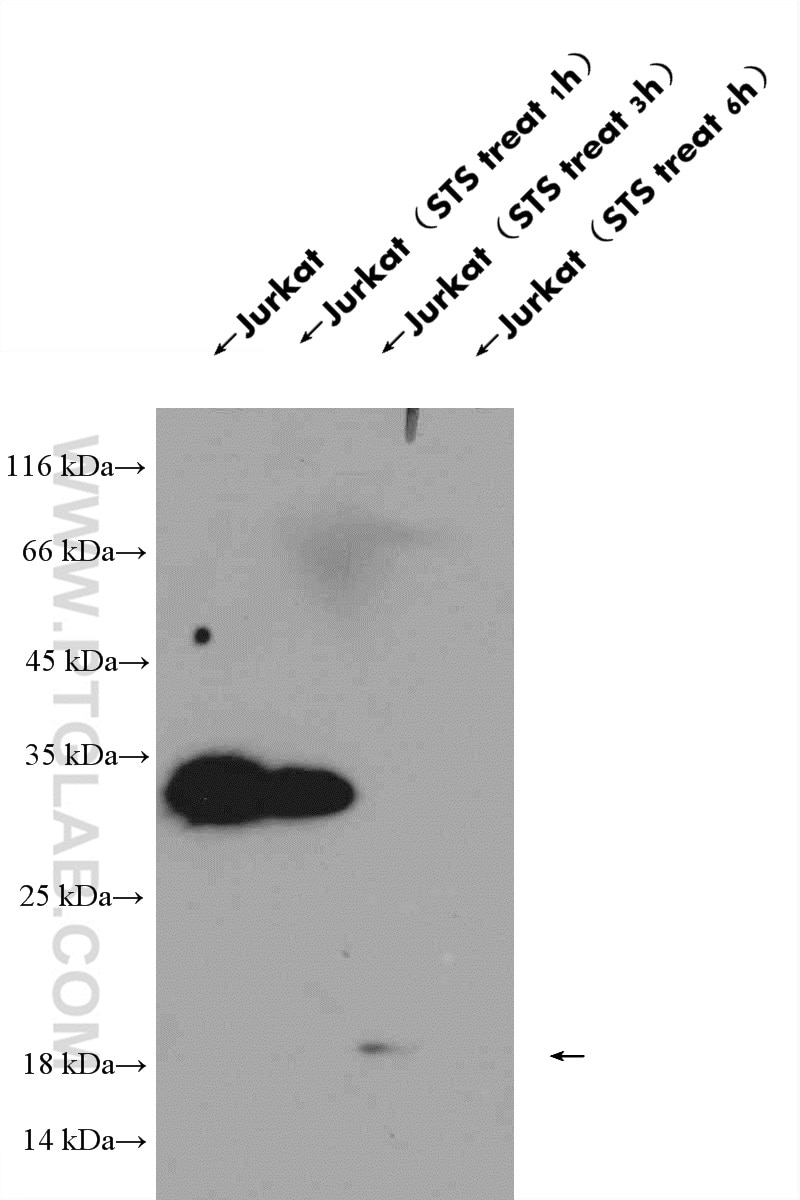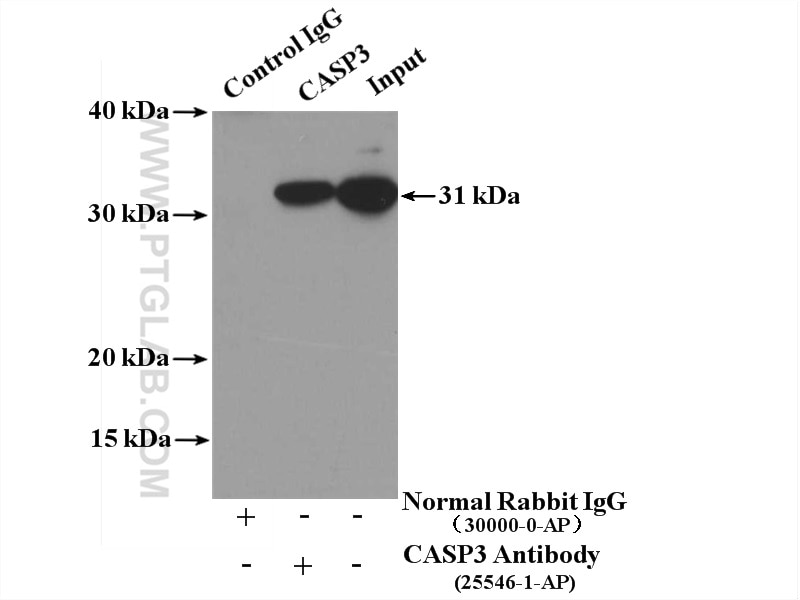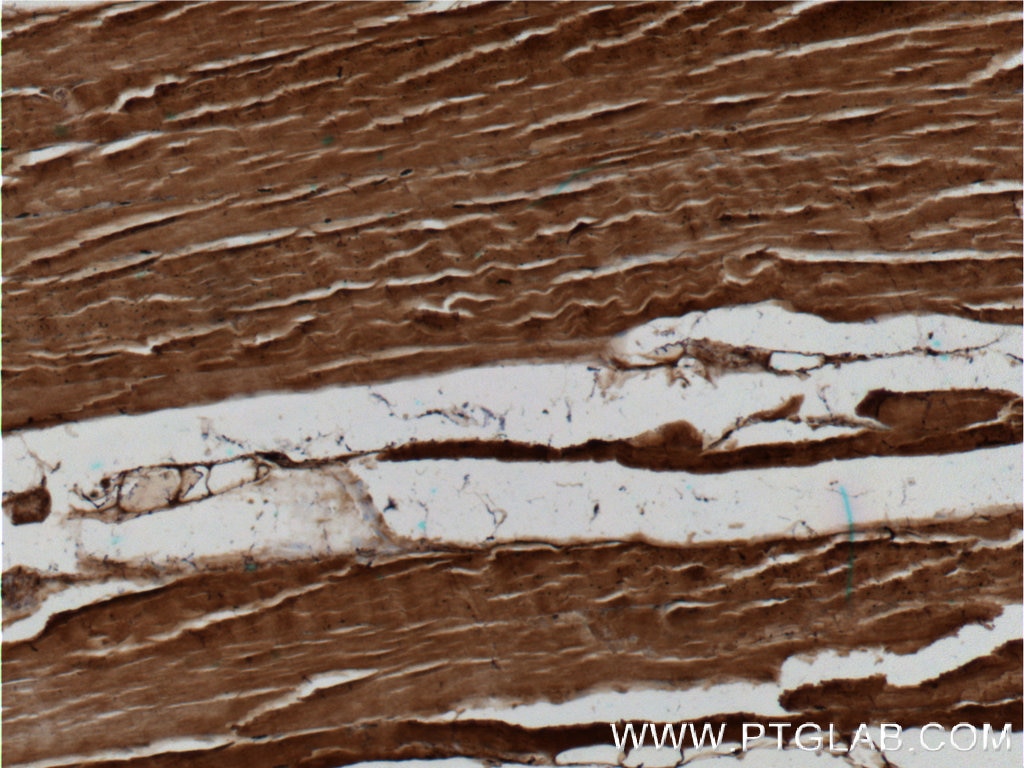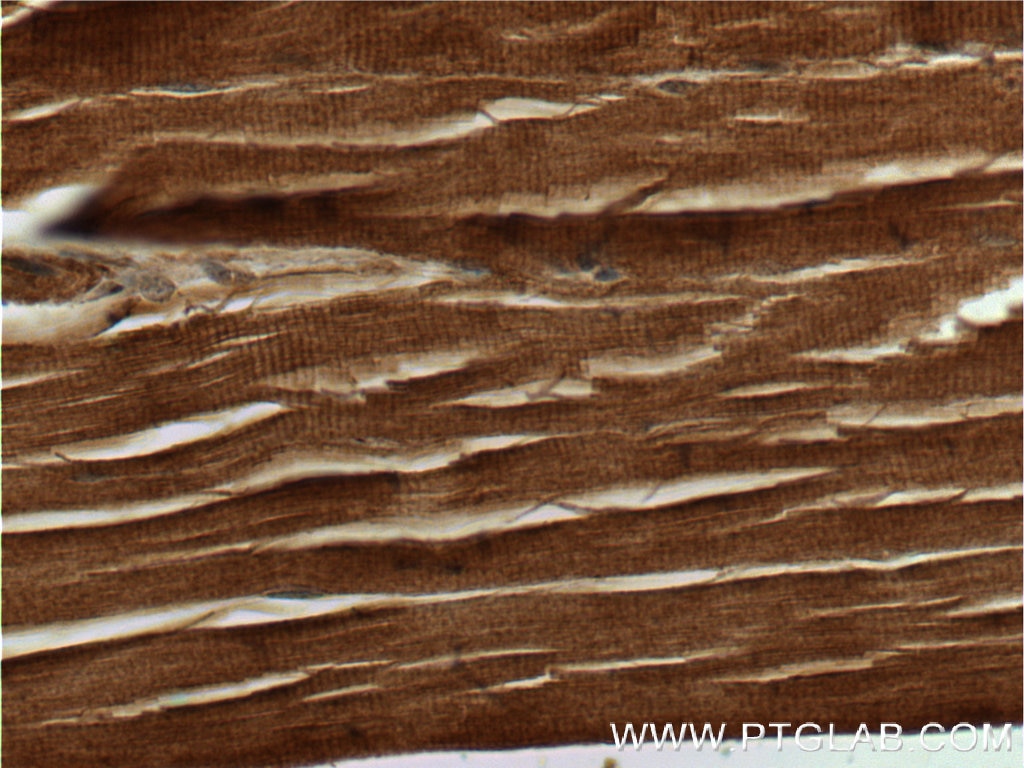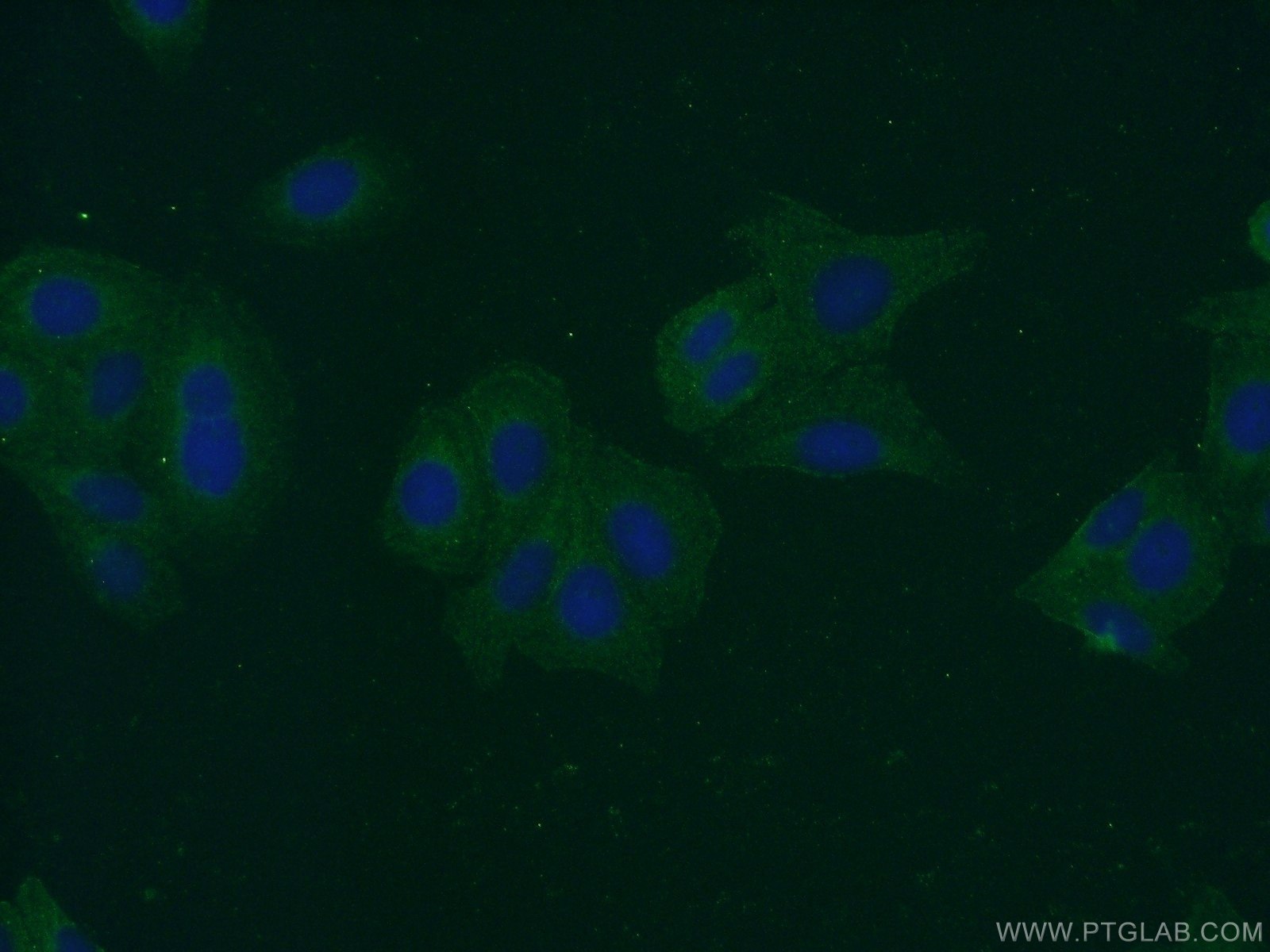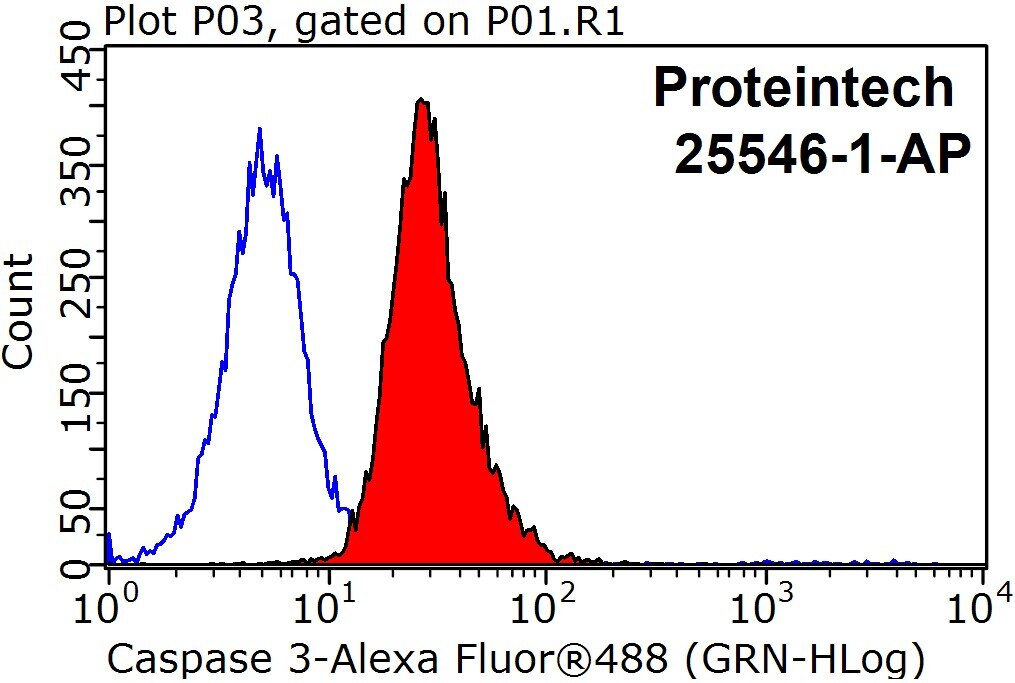cleaved-Caspase 3 Polyklonaler Antikörper
cleaved-Caspase 3 Polyklonal Antikörper für FC, IF, IHC, IP, WB, ELISA
Wirt / Isotyp
Kaninchen / IgG
Getestete Reaktivität
human, Maus, Ratte und mehr (1)
Anwendung
WB, IP, IHC, IF, FC, ELISA
Konjugation
Unkonjugiert
Kat-Nr. : 25546-1-AP
Synonyme
Galerie der Validierungsdaten
Geprüfte Anwendungen
| Erfolgreiche Detektion in WB | mit Tunicamycin behandelte HepG2-Zellen, mit Staurosporin behandelte Jurkat-Zellen, mit Tunicamycin behandelte HeLa-Zellen |
| Erfolgreiche IP | Jurkat-Zellen |
| Erfolgreiche Detektion in IHC | humanes Skelettmuskelgewebe Hinweis: Antigendemaskierung mit TE-Puffer pH 9,0 empfohlen. (*) Wahlweise kann die Antigendemaskierung auch mit Citratpuffer pH 6,0 erfolgen. |
| Erfolgreiche Detektion in IF | HepG2-Zellen |
| Erfolgreiche Detektion in FC | HeLa-Zellen |
Empfohlene Verdünnung
| Anwendung | Verdünnung |
|---|---|
| Western Blot (WB) | WB : 1:500-1:1000 |
| Immunpräzipitation (IP) | IP : 0.5-4.0 ug for 1.0-3.0 mg of total protein lysate |
| Immunhistochemie (IHC) | IHC : 1:20-1:200 |
| Immunfluoreszenz (IF) | IF : 1:20-1:200 |
| Durchflusszytometrie (FC) | FC : 0.20 ug per 10^6 cells in a 100 µl suspension |
| It is recommended that this reagent should be titrated in each testing system to obtain optimal results. | |
| Sample-dependent, check data in validation data gallery | |
Veröffentlichte Anwendungen
| WB | See 108 publications below |
| IHC | See 9 publications below |
| IF | See 4 publications below |
| FC | See 1 publications below |
Produktinformation
25546-1-AP bindet in WB, IP, IHC, IF, FC, ELISA cleaved-Caspase 3 und zeigt Reaktivität mit human, Maus, Ratten
| Getestete Reaktivität | human, Maus, Ratte |
| In Publikationen genannte Reaktivität | human, hamster, Maus, Ratte |
| Wirt / Isotyp | Kaninchen / IgG |
| Klonalität | Polyklonal |
| Typ | Antikörper |
| Immunogen | Peptid |
| Vollständiger Name | caspase 3, apoptosis-related cysteine peptidase |
| Berechnetes Molekulargewicht | 32 kDa |
| Beobachtetes Molekulargewicht | 17 kDa |
| GenBank-Zugangsnummer | NM_032991 |
| Gene symbol | CASP3 |
| Gene ID (NCBI) | 836 |
| Konjugation | Unkonjugiert |
| Form | Liquid |
| Reinigungsmethode | Antigen-Affinitätsreinigung |
| Lagerungspuffer | PBS mit 0.02% Natriumazid und 50% Glycerin pH 7.3. |
| Lagerungsbedingungen | Bei -20°C lagern. Nach dem Versand ein Jahr lang stabil Aliquotieren ist bei -20oC Lagerung nicht notwendig. 20ul Größen enthalten 0,1% BSA. |
Hintergrundinformationen
Caspase 3, also named CPP32, SCA-1, and Apopain, belongs to the peptidase C14A family. Caspase 3 is involved in the activation cascade of caspases responsible for apoptosis execution. At the onset of apoptosis, it proteolytically cleaves poly(ADP-ribose) polymerase (PARP) at a '216-Asp-|-Gly-217' bond. Caspase 3 cleaves and activates sterol regulatory element binding proteins (SREBPs) between the basic helix-loop-helix leucine zipper domain and the membrane attachment domain. Cleaves and activates caspase-6, -7, and -9. CASP3 is involved in the cleavage of huntingtin. The antibody can recognize active-caspase 3.
Protokolle
| Produktspezifische Protokolle | |
|---|---|
| WB protocol for cleaved-Caspase 3 antibody 25546-1-AP | Protokoll herunterladen |
| IHC protocol for cleaved-Caspase 3 antibody 25546-1-AP | Protokoll herunterladen |
| IF protocol for cleaved-Caspase 3 antibody 25546-1-AP | Protokoll herunterladen |
| IP protocol for cleaved-Caspase 3 antibody 25546-1-AP | Protokoll herunterladen |
| Standard-Protokolle | |
|---|---|
| Klicken Sie hier, um unsere Standardprotokolle anzuzeigen |
Publikationen
| Species | Application | Title |
|---|---|---|
Autophagy Increased mitochondrial fission promotes autophagy and hepatocellular carcinoma cell survival through the ROS-modulated coordinated regulation of the NFKB and TP53 pathways. | ||
Diabetes MICU1 Alleviates Diabetic Cardiomyopathy Through Mitochondrial Ca(2+)-dependent Antioxidant Response. | ||
PLoS Biol The Machado-Joseph Disease Deubiquitinase Ataxin-3 Regulates the Stability and Apoptotic Function of p53. | ||
Biol Res MicroRNA-1247 inhibits cell proliferation by directly targeting ZNF346 in childhood neuroblastoma. | ||
Oxid Med Cell Longev Classic Prescription, Kai-Xin-San, Ameliorates Alzheimer's Disease as an Effective Multitarget Treatment: From Neurotransmitter to Protein Signaling Pathway. |
